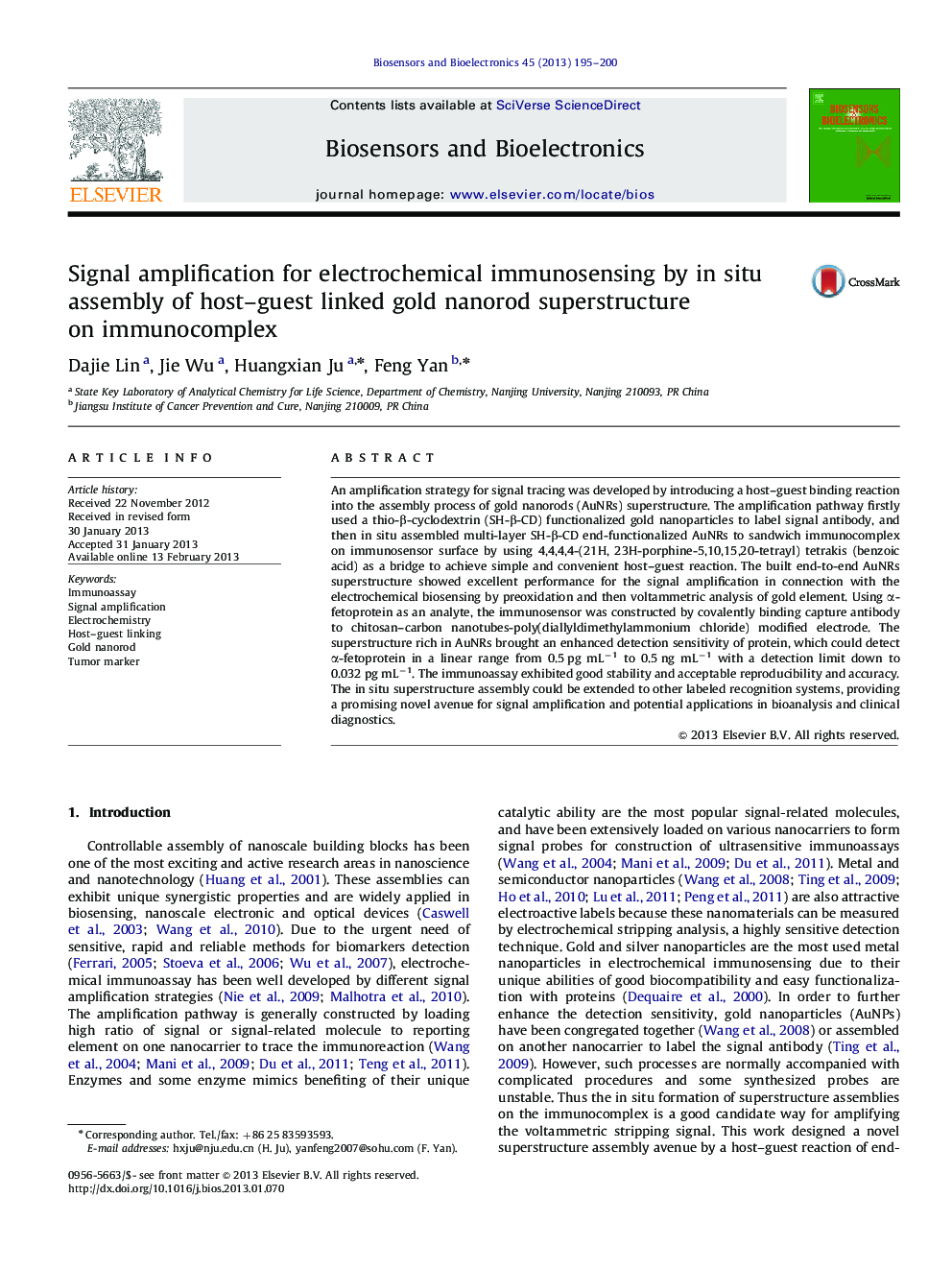| Article ID | Journal | Published Year | Pages | File Type |
|---|---|---|---|---|
| 867045 | Biosensors and Bioelectronics | 2013 | 6 Pages |
An amplification strategy for signal tracing was developed by introducing a host–guest binding reaction into the assembly process of gold nanorods (AuNRs) superstructure. The amplification pathway firstly used a thio-β-cyclodextrin (SH-β-CD) functionalized gold nanoparticles to label signal antibody, and then in situ assembled multi-layer SH-β-CD end-functionalized AuNRs to sandwich immunocomplex on immunosensor surface by using 4,4,4,4-(21H, 23H-porphine-5,10,15,20-tetrayl) tetrakis (benzoic acid) as a bridge to achieve simple and convenient host–guest reaction. The built end-to-end AuNRs superstructure showed excellent performance for the signal amplification in connection with the electrochemical biosensing by preoxidation and then voltammetric analysis of gold element. Using α-fetoprotein as an analyte, the immunosensor was constructed by covalently binding capture antibody to chitosan–carbon nanotubes-poly(diallyldimethylammonium chloride) modified electrode. The superstructure rich in AuNRs brought an enhanced detection sensitivity of protein, which could detect α-fetoprotein in a linear range from 0.5 pg mL−1 to 0.5 ng mL−1 with a detection limit down to 0.032 pg mL−1. The immunoassay exhibited good stability and acceptable reproducibility and accuracy. The in situ superstructure assembly could be extended to other labeled recognition systems, providing a promising novel avenue for signal amplification and potential applications in bioanalysis and clinical diagnostics.
► Host–guest binding reaction is used for signal amplification. ► Gold nanorods superstructure is assembled on immunocomplex for signal tracing. ► End-to-end superstructure shows excellent performance for electrochemical immunosensing. ► The in situ superstructure assembly can be extended to other labeled recognition systems.
